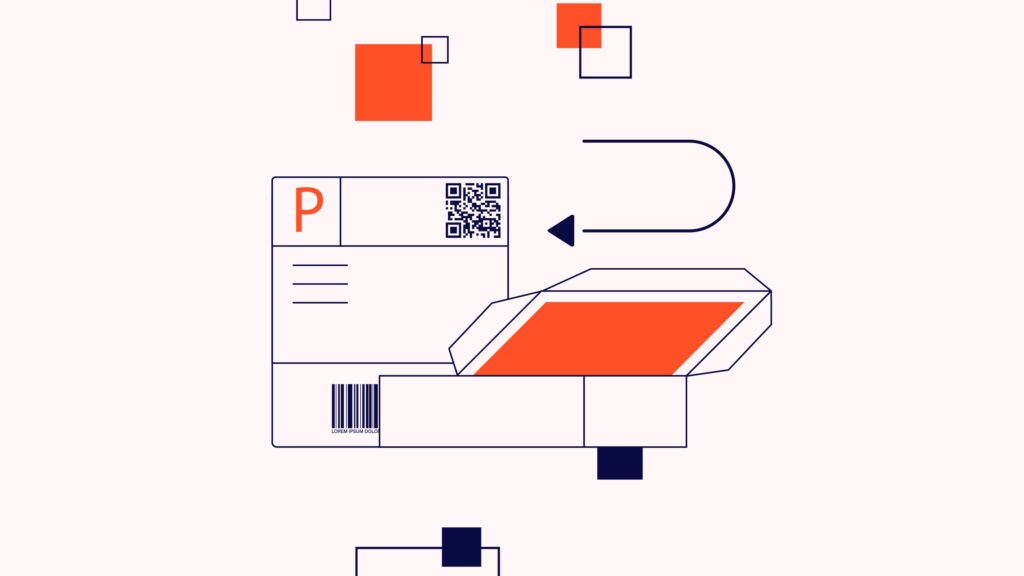Over 18% of products bought online are returned, and 60% of online shoppers say they check the returns policy before making an online purchase. Yet many business owners still don’t follow ecommerce returns best practices, leading to the ecommerce return rate going up and the conversion rate going down.
The success of an online ecommerce business is mainly down to how many sales you can make. Still, a great customer returns experience is a huge part of attracting and retaining customers.
Having an excellent returns process is one of the most critical aspects of the customer experience. It may seem counterintuitive, but having a solid returns process can improve how many sales you make.
In this guide, I’ll go through ecommerce returns best practices and tell you how you can use the returns process to increase your sales and improve your brand reputation. Plus, I’ll outline strategies you can use when building your ecommerce returns policy, so let's jump in.
Why Are Customer Returns So Important?
Customer returns are an inevitable part of selling for online retailers, and just like brick-and-mortar store purchases, you need to make sure customers can be confident buying in the knowledge that they can return the item if it isn’t quite what they expected.
There are several legitimate reasons why a customer might want to return an item, so it is essential to make it as easy as possible for the customer to understand how they can send a product back.
If 60% of customers look at a returns policy before making a purchase, that is 60% of potential customers you need to impress.
A simple returns process will impact your conversion rate, and 27% of customers are more likely to make a purchase if it is free to return the product.
This is one of the reasons why Amazon has grown so quickly. Their customer returns process is so simple that you often don’t need to print anything off; simply return the product to the post office with a QR code. Amazon’s conversion rate is much higher than other businesses due to customers trusting the sales process, especially knowing that if they don’t like a product, they can send it back easily.
My products sell on my own site and Amazon, and the conversion rate on Amazon is 10-15% for each product, compared to 1-4% on my Shopify online store.
While focusing on customer returns, it's equally vital to address the root causes of these returns. Often, challenges in inventory management, such as stock discrepancies or quality issues, lead to increased returns. Delve deeper into understanding these inventory management challenges to streamline your operations.
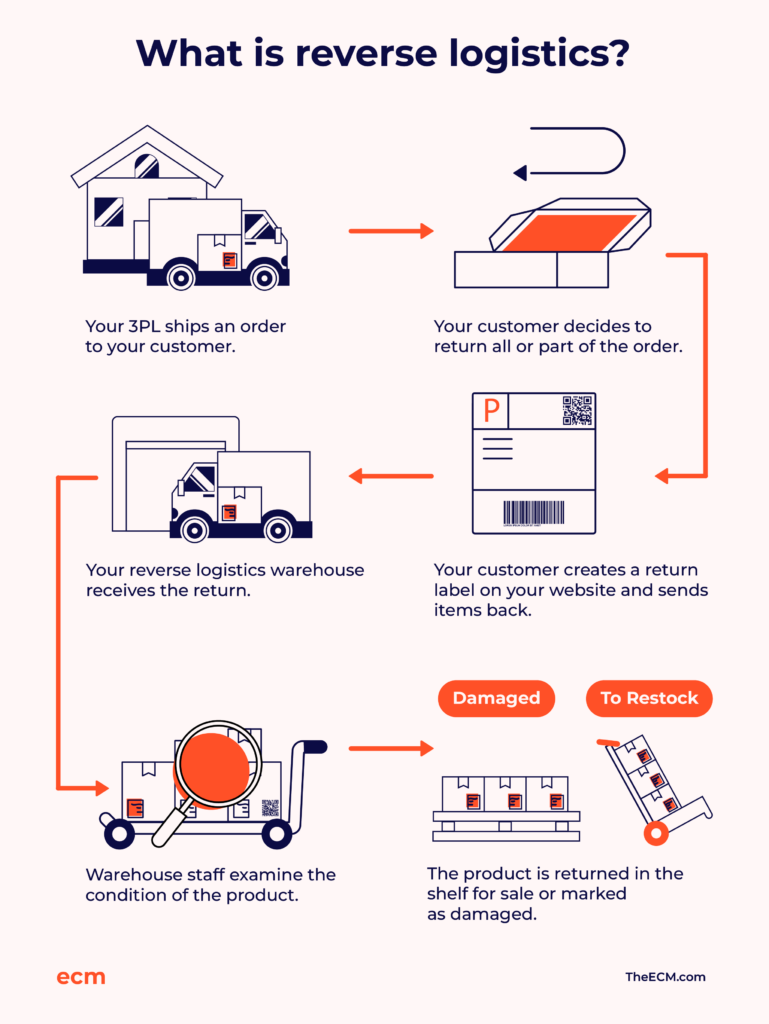
Should You Offer Free Returns? (Types & Benefits)
Free returns shipping has become much more common in the last 5-10 years as big brands and ecommerce retailers look for ways to out-compete each other to offer the best possible service. Amazon has been offering free return shipping since they launched Prime.
Since then, all the big brands, such as Walmart and Argos, have started to offer free ecommerce returns. Even eBay recommends that sellers pay for the returns if the customer isn’t happy.
This means that from a purely competitive standpoint, offering free returns will help you to keep up with the bigger brands.
However, sometimes it isn’t always in your interest to offer free returns. Let’s have a look at when you should offer free returns and when it might not be the best idea.
Type #1: Free return shipping
Increased customer satisfaction and customer loyalty
Offering free returns is an investment in your relationship with your customer. Customers are 62% more likely to shop at a brand that offers free return postage.
If you have products that can be exchanged, such as ordering a particular size, then offering free exchange returns is even more critical. If a customer isn’t able to try a product on, then they will need to buy it to make sure the product fits or it looks as expected.
Customer retention is essential, as repeat customers are cheaper and more likely to buy more products than first-time customers.
Increased basket size
By giving the customer a chance to return products easily, they are much more likely to have a larger basket size at the checkout. If the customer understands that it will be free to return a product, that customer will likely be converted to a sale. Free return shipping could be a great way to get customers to buy more from you.
Increased customer trust
If you don’t offer free return shipping, the customer could be more likely to question the quality of the product. If you charge a customer to send a product back, then the customer is likely to think twice about ordering from you again.
Type #2: Paid return shipping
Large items
Sometimes, a customer needs to return a very large product, requiring a specialist to collect the item from their house. In this scenario, charging customers for their returns may make sense.
Exchanges vs. returns
The reason a customer is returning a product is critical.
If a customer is looking to exchange the product, then it is important to offer free customer returns as the customer still wants the item, but it’s just not quite right. If the customer is simply looking for a refund, then paid returns may work for you.
Over 25% of returns are for exchanges, which is a lot of customers you could be alienating with a paid exchange service.
In-store vs. mail
Some brands offer returns in-store for free but charge the customer for postal returns.
If you don’t have a brick-and-mortar store, one option is offering a free return to a collection point. Shipping brands such as Evri allow you to use collection points for customer returns, and it might save you money compared to individually shipping each item back to your warehouse.
Type #3: Free vs. paid
If you can offer free returns, then it’s the best option, in my experience. While the shipping costs may be high, you will have a much higher conversion rate, and your overall basket size will be bigger. The most important thing is ensuring you can afford the return cost.
Several costs involved with customer returns affect your bottom line, not just the shipping label. For example, if you use a marketplace such as Amazon, you might have to accept free returns as part of your agreement with them. When you are working out the cost of the returns, you also can’t ignore the costs of warehouse staff and other labor.
Make sure your profit margin is big enough to handle free returns before you roll it out to your business.
Ecommerce Returns Best Practices
Whether your return shipping is free or paid, there are some best practices you need to follow to give the customer the best possible experience.
1. Provide a clear returns policy
Your returns policy should be visible to customers and completely transparent, especially if you plan to charge for returns. Customers don’t like paying unnecessary fees, but they will be even more annoyed if handed a postage charge they weren’t expecting. That would probably end the relationship between you and the customer.
These are some best practices for your shipping returns policy:
Be transparent
- Your returns policy needs to be clearly displayed to the customer both on the product pages in the product descriptions and in the footer of your ecommerce website.
- Create a page showing the returns policy, so customers can access it and trust that they understand the process.
- If there are charges for the returns, make sure that is very clear from the beginning of their journey.
- If there are different charges for different regions, make it clear on the policy page.
- If your refunds only offer store credit, make that very obvious.
Tell customers about free return shipping
Free return shipping is a massive selling point, so you should communicate that to customers repeatedly. Free shipping converts much higher than paid shipping, even if the overall price is higher for the customer!
If your shipping is free for certain types of returns, but not others, be sure to make that very clear on the listing, FAQ, and shipping policy page. This way, a customer knows exactly where they stand.
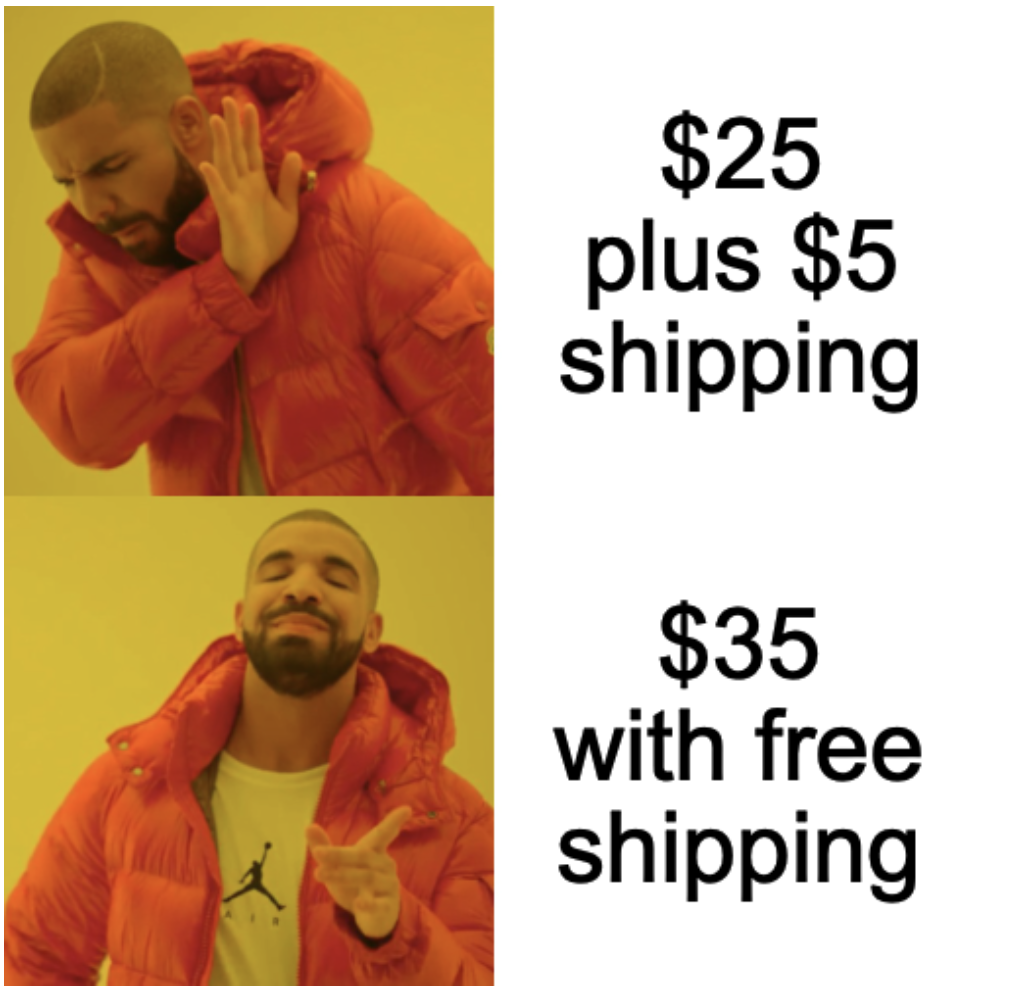
Team up with a shipping carrier partner
Let the customers know who the shipping carrier is. This builds a huge amount of trust, as customers will have often used particular carriers before.
In my business, I sell products on Etsy that are shipped by Amazon. Customers could get confused when an Amazon parcel arrives on their doorstep, so I have added some wording to clarify that I use Amazon to ship my items.
Give clear timeframes
What timeframe does a customer have to return a product? Most brands use a 28, 30, 45, or 60-day return window—whatever you choose, make it clear to the customer. If the product also has a warranty, tell the customer how they can send their product back and over what timeframe.
2. Make return process instructions clear
The returns policy is part of the customer return journey, but the customer also needs step-by-step instructions for returning a product. The instructions should be easy to find on your website, but they could also be included in the packaging.
The British brand Avrri includes instructions both on the website and inside the packaging, with clear step-by-step instructions for how to return products. This excellent customer experience gives me complete confidence that the brand has my interests in mind.
3. Provide free return shipping labels
There are three popular methods for providing prepaid shipping labels to customers: scannable, pre-printed, and printable.
Scannable labels
Scannable labels are usually in the form of a QR code that the customer takes to the collection point. The advantage of a scannable label is that it is easy for the customer to simply take their phone to the post office or collection point, scan the QR code, and return the product. The QR code will need to be requested by the customer, as it will be linked to a particular order number.
Another advantage of QR codes and collections is that you can often get a cheaper rate from the shipping carrier, as there are fewer drop-offs for them. If you have your returns system integrated with your order management system, then the customer doesn't need to tell you they are returning the product. When the QR code is generated, you will get a notification that the product is being returned, and you can prepare to accept the parcel.
The main disadvantage is that a customer must go to the collection point, which could be quite far away and inconvenient.
Pre-printed labels
Pre-printed shipping labels are good because they allow customers to prepare their products for return without leaving the house.
The advantage of this type of return is that customers can simply package up their unwanted products and take them to the collection point or post office. The downside to this method is that the customer needs to make sure they have kept the label for the duration of the returns period and also kept hold of any packaging that needs returning.
Fashion brands use this method of returns, as clothes are easy to repack and are unlikely to get damaged.
Pre-printed labels allow the customer to send the product back to you without informing you first. This is good for the customer, but it does make tracking your inventory more complicated, as you won’t know when a product is coming back into stock.
To combat confusion, research cloud-based inventory management software that might be able to integrate with return management systems or order tracking.
Printable labels
Printable shipping labels need to be printed and then affixed to the return packaging. The benefit of printable returns is that you don’t necessarily need the technology integrations, as you can let the customer fill in their order number onto a form that they can print off.
The downside to printable labels is that many people don’t have a printer—so it could be a hassle.
Hybrid labels
Some ecommerce brands use a mixture of all three, which is a good option if you can offer it. There are integrations for the major platforms, such as Shopify, which can help handle all the different return labels. Loop and Swap Commerce are great returns software that integrates with most ecommerce platforms.
4. Reduce the number of returns with accurate product listings
One important part of the returns process is reducing the amount of returns you get in the first place. The best way to do this is to make your listings extremely clear when describing your products:
- Use reviews on the listings. Other customers sometimes give feedback, which could help another customer make a purchase decision. For example, with one of my products (a planter) on Amazon, customers have left reviews saying that the product has drainage holes, so it should be placed on a plate. I include that information in my listing now, but it has helped lots of customers.
- Use product videos. Asos is excellent in this area, as they provide videos of models wearing the clothes, and the models are all different sizes, so you can see how different clothes fit different body shapes.
- Use size charts for clothes, and say what size a model is if they are wearing clothes.
- Take photos from different angles or in different settings, so customers can understand what the products will look like.
Ecommerce Returns Shipping Process: Step-By-Step Guide
We have been through some best practices for how the customer physically returns the products. However, there are also processes on the business owner’s end to ensure that the return arrives safely, the customer is kept up to date with the tracking, and the product quality is checked when it arrives.
Keep stock levels accurate with inventory management software
When the return is initiated, and the product is sent back to the warehouse, you must ensure that your inventory levels are kept up to date. Some inventory management software include returns functions built in, whereas some software requires extra integrations to process returns. Returns software has some key features that you should look out for.
Create return labels for customers
Creating labels automatically saves time and also reduces human error. Prepaid, printable, and QR code labels can all be created using most software.
Ensure you have shipping carrier integration
Most returns tools integrate with the major shipping carriers but check to ensure your carrier is covered. Reverse logistics is a big part of your overall shipping strategy.
Implement returns tracking
If your software integrates with your carrier’s systems, then you should be able to track the return. This is good for your customer support team, but it can also be good for the customer if they can track a return themselves. Customers can often log into a returns portal to track the progress of their online return.
Spot returns trends with analytics
Management reports can be created to track returns data, such as return reason, return costs, re-sellable items data, etc. Analytics like this can be a good way of seeing trends and helping you to make business decisions. Restocking products can be expensive, so you don’t want to restock products with many returns. Try enterprise inventory management software, which often has greater depth and breadth of data analysis.
Enable automated communication
The best returns software can send automated emails to your customers, letting them know where their package is. They can also be integrated with any chatbot functions so that customers can simply chat with your customer service chatbot to find out the status of a return.
Provide clear customer communication
Customers should automatically receive an email confirmation and a tracking number when they start the returns process. The tracking number generated will depend on whether you use pre-printed or QR code returns labels.
If you use the QR code scannable returns or pre-printed labels, the customer will be able to track the return from the point of drop off, or in the case of pre-printed returns being posted, once the post office has scanned it.
Once a customer has let you know they want to return an item, you should ensure that all your communications with them are polite and on time. Customers returning products may still shop with you in the future, so it is important not to lose the customer forever.
Do a quality inspection
When you receive returned items in your warehouse, checking the item's quality is essential. There are several reasons for this, including:
- There could be quality issues that you need to fix with the manufacturing process.
- You could have some controllable returns. Some customer returns are unavoidable, but you may find there is something controllable, such as the quality of the packaging, that can be fixed.
- The customer could be lying about the return reason, for example, if they claim it is unworn but has been worn. Return fraud can cost you money if you aren’t on top of it.
- If the product is in good condition, you might want to resell it again. Amazon resells many of the products that are returned.
- There could be a safety issue that needs to be resolved.
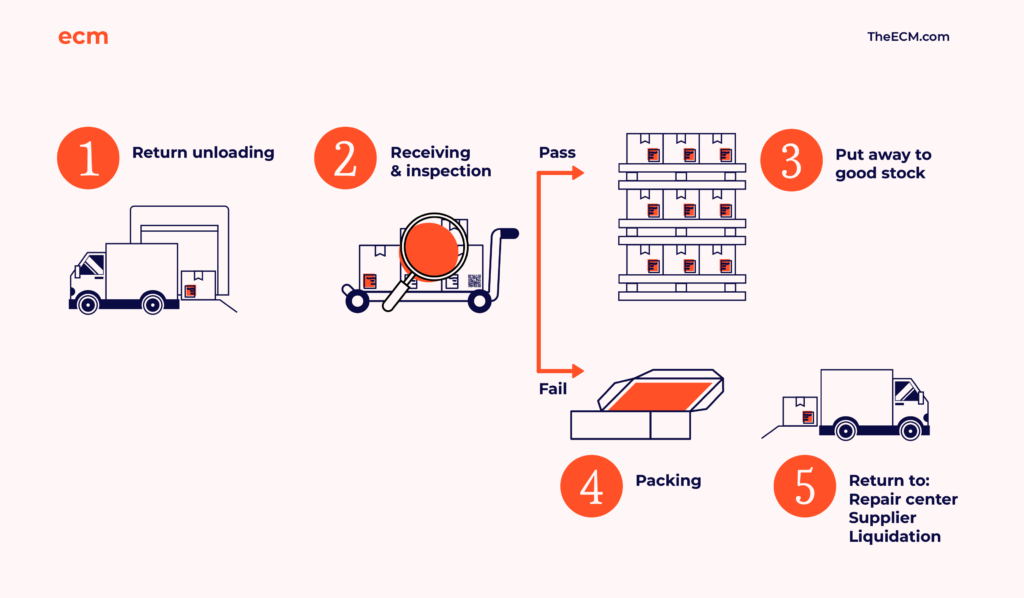
Any products that aren’t sellable can be resold at a discount, given to charity stores, or destroyed.
Refund the customer promptly
Customers hate waiting for their money, so the refund should be paid immediately once the return has been processed in the warehouse. Some brands even offer refunds before the products have arrived so that the customer can get their money straight away. This can work for big businesses but could be too expensive for smaller brands.
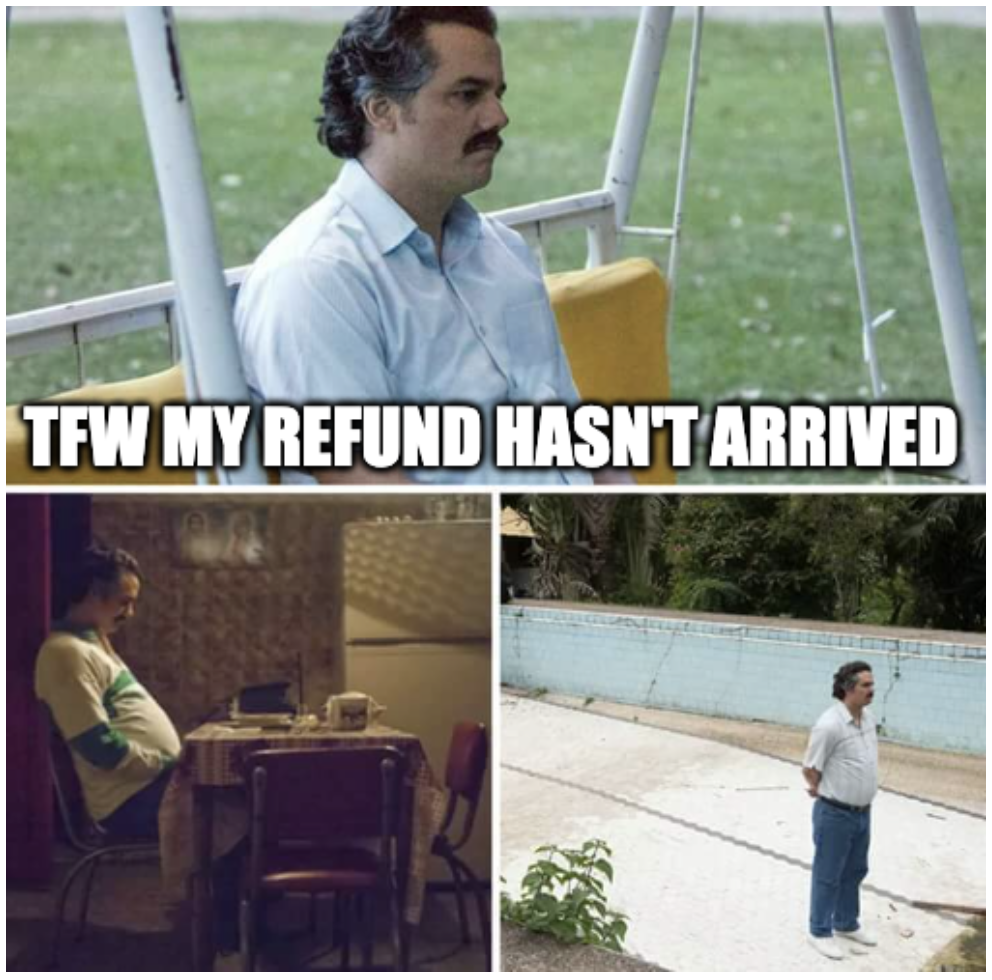
Your Returns Process Can Be Your Best Sales Asset
Having a great customer returns process is, in many ways, just as important as having a good marketing process. Without a good returns process, you will lose customer trust, which could affect your sales.
By having a transparent process that is easy for the customer to understand, you are giving them the peace of mind that they can make an order and send it back if it's not quite right.
If your profit margins allow it, try to offer free returns, as it can increase your conversion rate and make you more money.
For more essential tips and advice for your ecommerce business, subscribe to The Ecomm Manager newsletter today.
More great ECM content:
- An Easy Guide To Ecommerce Shipping
- How To Offer Free Shipping On Your Ecommerce Store: Examples & Solutions
- Ecommerce Shipment Tracking: How To Use Order Tracking To Boost Your Sales
- What Is Reverse Logistics In Supply Chain Management? Best Practices & How-To Tips
- What Is 3PL (Third-Party Logistics): Definition & Top Companies to Use For Your Business
- 10 Best Ecommerce Shipping Software For Ecommerce Sellers
- 10 Best Ecommerce Shipping Companies For Ecommerce Sellers
- 10 Best Order Tracking Software For Online Stores

